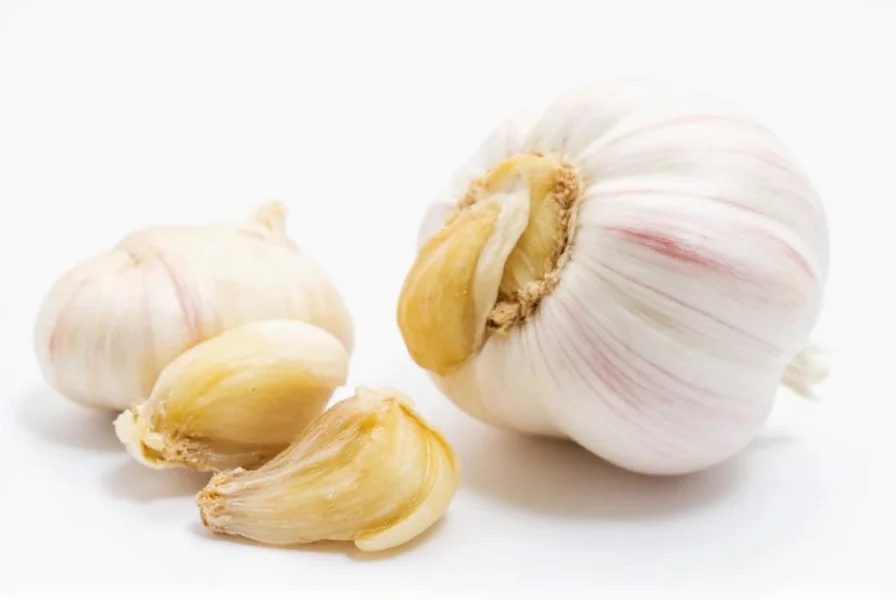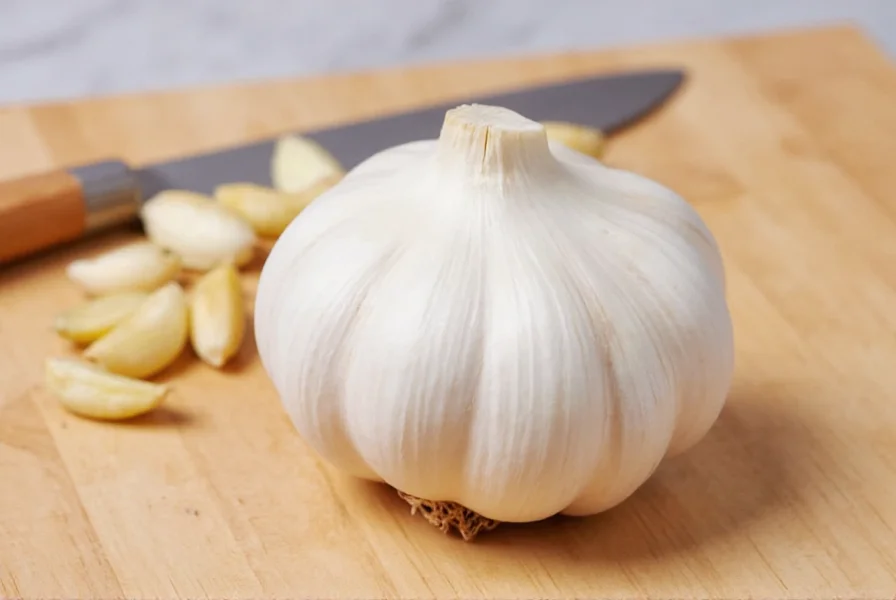Understanding garlic measurements is essential for consistent cooking results. Garlic cloves vary significantly in size, affecting recipe outcomes when precise measurements matter. This guide provides accurate conversions and practical tips for working with fresh garlic in your kitchen.
Why Garlic Clove Measurements Vary
Garlic isn't standardized like packaged ingredients. A single head of garlic contains cloves of different sizes, with outer cloves typically larger than inner ones. When recipes specify "two cloves," they usually assume medium-sized cloves (about 1 inch long and ½ inch in diameter).
| Garlic Size | Minced Measurement | Chopped Measurement | Weight (Approx.) |
|---|---|---|---|
| Small clove | ¾ teaspoon | ½ tablespoon | 3-4 grams |
| Medium clove | 1 teaspoon | 2/3 tablespoon | 5-7 grams |
| Large clove | 1¼-1½ teaspoons | 1 tablespoon | 8-10 grams |
Converting Two Cloves to Standard Measurements
When your recipe calls for "two cloves of garlic," here's what you can expect:
- Minced garlic: Two medium cloves equal 2 teaspoons (10 ml). This is the most common preparation method for sauces, dressings, and sautéed dishes.
- Chopped garlic: Two medium cloves yield approximately 1 tablespoon. Chopped garlic provides more texture and a stronger flavor release than minced.
- Garlic paste: Two cloves produce about 1½ teaspoons of paste when crushed with salt.
- Weight: Two medium cloves weigh 10-14 grams (0.35-0.5 ounces) with peel, or 8-12 grams (0.28-0.42 ounces) without peel.

Practical Measurement Tips for Home Cooks
Professional kitchens often weigh ingredients, but most home cooks rely on volume measurements. Here are reliable methods to measure two cloves of garlic without specialized tools:
- The teaspoon test: After mincing two cloves, mound the garlic in a teaspoon. Two medium cloves should fill the spoon level.
- Visual reference: A medium garlic clove roughly equals the size of your thumbnail before mincing.
- Water displacement: For precise measurement, place minced garlic in a 1-teaspoon measuring spoon and press down gently to eliminate air pockets.
- Consistency check: Properly minced garlic should have no large chunks but shouldn't be liquidy either.
When Fresh Garlic Isn't Available: Substitutions
Running out of fresh garlic? These substitutions work in a pinch, though they won't replicate fresh garlic's complex flavor:
- Garlic powder: ⅛ teaspoon powder equals one medium clove. For two cloves, use ¼ teaspoon.
- Garlic salt: ½ teaspoon equals one medium clove (remember to reduce other salt in recipe).
- Bottled minced garlic: ½ teaspoon from the jar equals one fresh clove (two cloves = 1 teaspoon).
- Garlic paste in tubes: ½ inch (1.25 cm) squeezed from the tube equals one medium clove.
Keep in mind that processed garlic products lack the brightness of fresh garlic and may have preservatives affecting flavor. For best results in dishes where garlic is prominent (like aioli or pesto), always use fresh cloves.
Factors Affecting Garlic Measurements
Several elements influence how much two cloves actually measure:
- Garlic variety: Softneck garlic (common in supermarkets) has smaller cloves than hardneck varieties.
- Seasonality: Freshly harvested garlic (late summer) contains more moisture than stored garlic (winter), affecting volume.
- Preparation method: How finely you mince affects volume - aggressive mincing yields slightly less volume than gentle chopping.
- Age of garlic: Older garlic dries out, reducing volume but intensifying flavor.

Professional Kitchen Techniques for Consistent Results
Chefs achieve consistent garlic measurements through these methods:
- Standardized mincing: Using a consistent knife technique ensures uniform particle size.
- Weight-based measurement: For critical recipes, weighing garlic (two medium cloves = 8-12g peeled) provides the most accuracy.
- Batch preparation: Mincing multiple cloves at once ensures consistent texture across measurements.
- Flavor balancing: Adjusting other ingredients based on garlic strength (older garlic is stronger) rather than strict measurements.
When cooking for others or following precise baking recipes, weighing your garlic provides the most reliable results. A small kitchen scale (measuring to 1g increments) costs less than $10 and dramatically improves recipe consistency.
Common Measurement Mistakes to Avoid
Many home cooks make these errors when measuring garlic:
- Assuming all cloves are equal: Heads contain varying clove sizes - outer cloves are larger.
- Over-packing measuring spoons: Pressing down too hard on minced garlic increases density.
- Ignoring recipe context: A soup can handle measurement variations better than a delicate sauce.
- Using dried garlic measurements for fresh: Powder and fresh garlic aren't interchangeable by volume.
For most home cooking, being within 25% of the ideal measurement won't ruin your dish. However, when making garlic-forward recipes like aglio e olio or garlic bread, precision matters more.
How many tablespoons is two cloves of garlic when minced?
Two medium cloves of garlic yield approximately ⅔ tablespoon (2 teaspoons) when minced. For chopped garlic, two cloves equal about 1 tablespoon. Remember that clove size affects this measurement - small cloves may yield only ½ tablespoon minced, while large cloves can produce up to 1 tablespoon.
What does two cloves of garlic look like visually?
Two medium garlic cloves are roughly the size of two large almonds or two thumbnails before peeling. After peeling, they should fill about two-thirds of a standard teaspoon when minced. Visually, they're approximately 1 inch long and ½ inch in diameter each before preparation.
How much jarred minced garlic equals two fresh cloves?
One teaspoon of jarred minced garlic typically equals two medium fresh garlic cloves. Check the product label as concentrations vary, but most commercial minced garlic uses a 2:1 ratio (two fresh cloves to one teaspoon jarred). Remember that jarred garlic has a different flavor profile and is less potent than freshly minced.
Does the measurement change if I roast the garlic first?
Yes, roasting garlic reduces its volume by about 30% due to moisture loss. Two medium cloves yield approximately 1½ teaspoons of roasted garlic paste compared to 2 teaspoons when raw and minced. Roasted garlic also has a softer texture, so it compacts more in a measuring spoon.
How can I measure two cloves of garlic without a measuring spoon?
Without measuring tools, use these visual guides: two medium cloves minced should cover a US nickel (5-cent coin) in a single layer. Alternatively, the minced garlic should fill the hollow of your index finger from the first knuckle to the tip. For chopped garlic, two cloves should fill the space between your thumb and forefinger when making an "OK" sign.










 浙公网安备
33010002000092号
浙公网安备
33010002000092号 浙B2-20120091-4
浙B2-20120091-4